Disclosure: This article contains affiliate links. We may earn a commission from purchases at no extra cost to you, which helps our travel content.
Standing at the edge of Shem Creek as the autumn light filters through Spanish moss, I'm reminded that Mount Pleasant isn't just Charleston's quieter neighbor—it's a historical treasure trove with its own distinct narrative. Having spent years exploring craft traditions across continents, I find something uniquely compelling about how this coastal South Carolina town preserves its complex past while acknowledging the full spectrum of its history. The layered stories of plantation life, maritime heritage, and Gullah Geechee culture offer visitors a nuanced understanding of the Lowcountry that extends far beyond the typical Southern tourism experience.
Boone Hall Plantation: Beyond the Avenue of Oaks
Most visitors come to Boone Hall for that iconic oak-lined entrance (yes, the one from The Notebook), but my import/export background has taught me to look beyond the surface beauty to the economic systems that created these places. Founded in 1681, Boone Hall remains one of America's oldest working plantations, with a complex history that's finally being told in full.
The plantation's Gullah culture presentation and preserved slave cabins offer one of the most comprehensive looks at enslaved life I've encountered in the South. As someone who's documented craft traditions globally, I was particularly moved by the basket-weaving demonstrations that continue centuries-old techniques brought from West Africa.
During my visit last October, the plantation's harvest festival coincided with perfect weather—crisp mornings giving way to warm afternoons. I captured the changing light on the Avenue of Oaks using my travel tripod, which proved invaluable for those golden hour shots when the moss seems to glow from within.
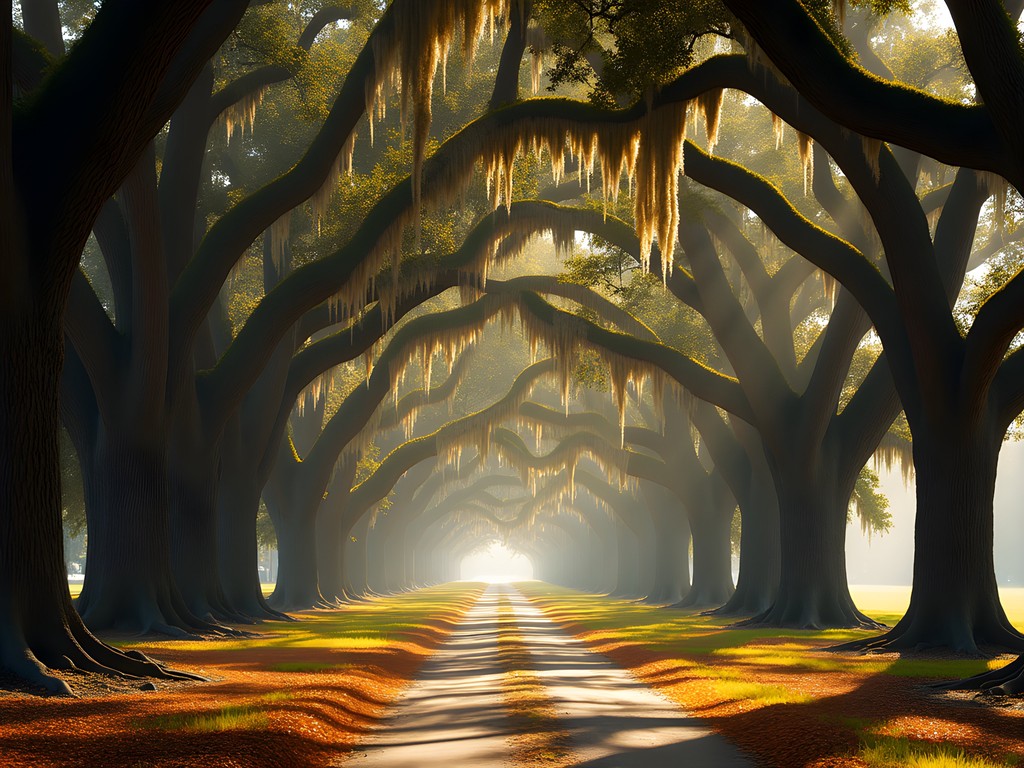
💡 Pro Tips
- Visit on weekdays to avoid weekend crowds at Boone Hall
- The Gullah culture presentation schedule varies seasonally—check times in advance
- Bring a polarizing filter for your camera to capture the Spanish moss against the blue autumn sky
Patriots Point: Naval History Meets Lowcountry Heritage
Patriots Point Naval & Maritime Museum offers a fascinating contrast to the plantation experience. As someone who's navigated global shipping logistics professionally, I found myself captivated by the USS Yorktown's role in transforming maritime commerce and military strategy.
The aircraft carrier's 888-foot length houses not just military exhibits but also provides context for how naval power shaped Charleston Harbor's development as a trading port. What surprised me most was the Vietnam Experience Exhibit—an immersive recreation that goes beyond hardware to explore the human stories.
For those traveling with family groups, this site offers multi-generational appeal. My binoculars came in handy for spotting dolphins in the harbor and examining details of Fort Sumter across the water. The museum typically requires 3-4 hours to explore properly, but history enthusiasts could easily spend a full day here.

💡 Pro Tips
- Purchase tickets online for a small discount
- Visit late afternoon (after 2pm) when school groups have typically departed
- The Flight Simulator is worth the extra fee for aviation enthusiasts
Charles Pinckney National Historic Site: The Forgotten Founding Father
Tucked away in the Old Village area sits Snee Farm, once the country estate of Charles Pinckney—a principal author of the U.S. Constitution whose contributions often go unrecognized. As someone fascinated by how craftsmanship shapes cultural identity, I was drawn to this site not for grand architecture but for its archaeological significance.
The modest 28-acre property preserves foundations of original structures and archaeological findings that reveal daily life patterns from the 18th and 19th centuries. The visitor center, housed in an 1828 coastal cottage, contains exhibits that thoughtfully examine both Pinckney's political contributions and the enslaved community that maintained his wealth.
What makes this site special is its intimacy. Unlike larger plantations, you can explore at your own pace with few other visitors around. I spent a peaceful afternoon sketching ceramic fragments on display (my grandmother's influence never leaves me) and walking the interpretive trails through grounds that once grew indigo and rice. My travel journal filled quickly with observations about how this site presents a more nuanced view of founding father mythology than many historic homes I've visited.

💡 Pro Tips
- The site is completely free to visit—a rare find among historic attractions
- Rangers offer excellent impromptu talks if you show particular interest in an exhibit
- The shaded grounds are perfect for a midday break from more crowded attractions
Sweetgrass Basket Corridors: Living Gullah Heritage
Perhaps the most meaningful experience in Mount Pleasant isn't found in a formal museum but along Highway 17, where Gullah Geechee artisans continue the centuries-old tradition of sweetgrass basketry. As someone who's documented craft traditions across Southeast Asia and South America, I find the resilience of this particular art form remarkable.
These intricate coiled baskets—made from locally harvested grasses, pine needles, and palmetto fronds—represent one of North America's oldest continuous craft traditions with direct African roots. The basket stands along Highway 17 and Hamlin Road aren't tourist traps; they're authentic workshops where many artisans are creating pieces using techniques passed down through generations since the 1700s.
My professional background in import/export has made me keenly aware of how global development threatens traditional crafts. The basket makers of Mount Pleasant face similar challenges as urban development limits access to natural materials. I was particularly moved speaking with a seventh-generation weaver who described how her family adapted their techniques as sweetgrass became scarcer.
For those interested in bringing home a meaningful souvenir, these baskets represent living history. While quality pieces command appropriate prices (starting around $50 for simple designs), my travel camera captured the intricate process that justifies the investment. Each basket represents dozens of hours of skilled labor and centuries of preserved knowledge.

💡 Pro Tips
- Take time to talk with the artisans—many are happy to explain their techniques if approached respectfully
- Basket prices reflect fair compensation for incredible skill and time—this isn't a place to haggle
- The light for photography is best in late afternoon when the golden hour illuminates the natural materials beautifully
Shem Creek: Where History Meets Modern Waterfront Life
My exploration of Mount Pleasant's historical landscape always ends at Shem Creek, where the area's maritime past blends seamlessly with contemporary life. This working waterfront has evolved from a shipbuilding center and shrimping hub to a dining destination, yet it retains authentic connections to its seafaring heritage.
The Shem Creek Boardwalk provides an excellent vantage point to observe working shrimp boats returning with their catches—a tradition increasingly rare along the developed Atlantic coast. As someone who's documented how traditional industries adapt to changing economies worldwide, I find Shem Creek's balance between preservation and progress fascinating.
For sunset viewing, I recommend walking the full length of the boardwalk with a insulated water bottle filled with something refreshing. The boardwalk connects to Mount Pleasant Memorial Waterfront Park via a pathway that offers spectacular views of the Arthur Ravenel Jr. Bridge against the changing evening sky.
After exploring the creek's history, consider dining at one of the waterfront restaurants. While several cater heavily to tourists, Vickery's Bar & Grill offers a more local experience with its deck overlooking the marsh and creek. Their seafood comes directly from the boats you'll see docked nearby—a farm-to-table experience that predates the modern movement by generations.
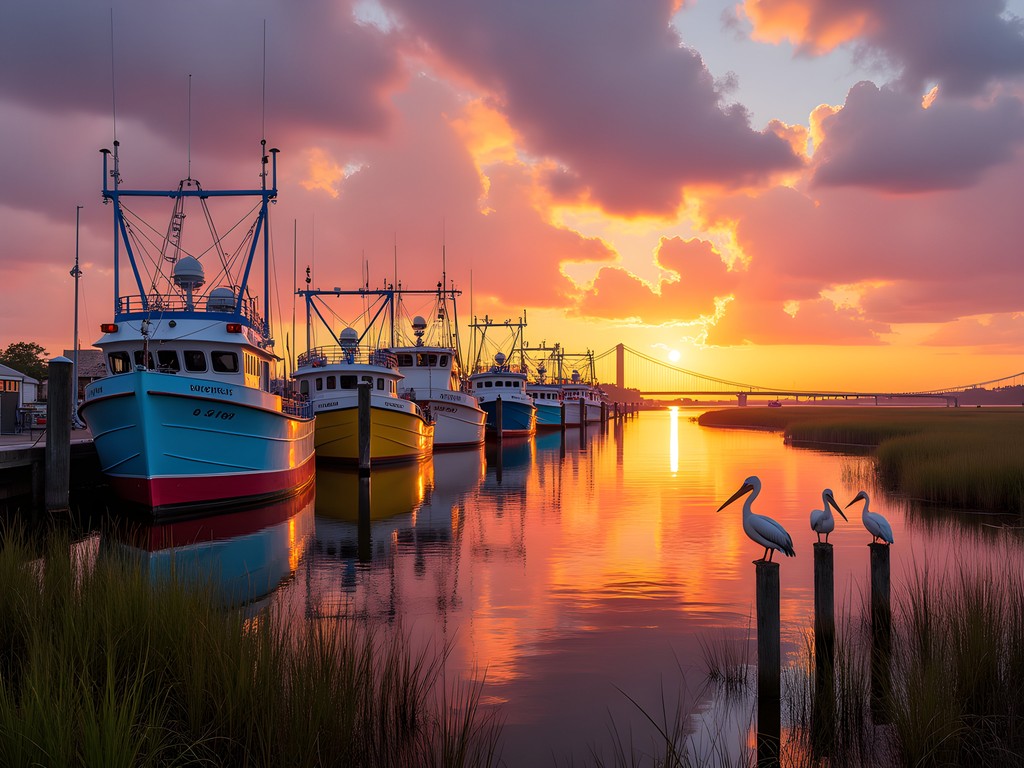
💡 Pro Tips
- Visit at both high and low tide to experience how dramatically the creek landscape changes
- Dolphins frequently appear in the creek, especially around sunset
- The best photos of returning shrimp boats usually happen between 3-5pm on weekdays
Final Thoughts
Mount Pleasant offers a historical journey that complements—rather than competes with—Charleston's well-trodden paths. What makes this area special is how it preserves not just buildings but living traditions that connect past to present. As someone who's explored craft heritage across continents, I find the Lowcountry's commitment to maintaining these connections particularly meaningful.
The fall season transforms these historic landscapes with golden light and comfortable temperatures that make exploration a pleasure rather than an endurance test. Whether you're examining the intricate construction of a sweetgrass basket or watching shrimp boats return against a sunset backdrop, Mount Pleasant rewards those who seek a deeper understanding of how history shapes place.
I encourage you to approach these sites with both curiosity and respect—many tell difficult stories alongside tales of beauty and resilience. Take time to engage with the keepers of local knowledge, whether they're National Park rangers, Gullah basket weavers, or maritime workers. Their insights will transform your experience from simple sightseeing to meaningful connection with the complex tapestry that is the South Carolina Lowcountry.
✨ Key Takeaways
- Mount Pleasant's historical sites tell a more complete story of Lowcountry history when experienced together
- Fall offers ideal weather and lighting conditions for exploring outdoor historical landscapes
- Living traditions like sweetgrass basketry provide direct connections to cultural heritage that museum exhibits alone cannot offer
📋 Practical Information
Best Time to Visit
September through November
Budget Estimate
$100-150 per day including accommodations
Recommended Duration
3-5 days
Difficulty Level
Easy

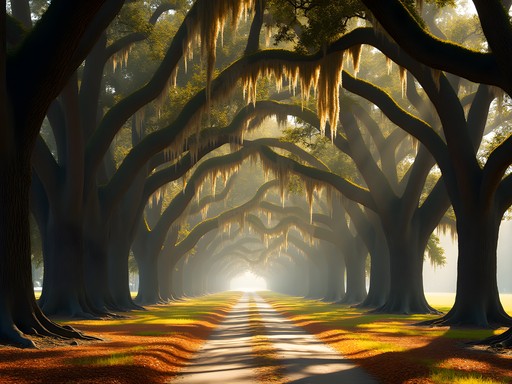

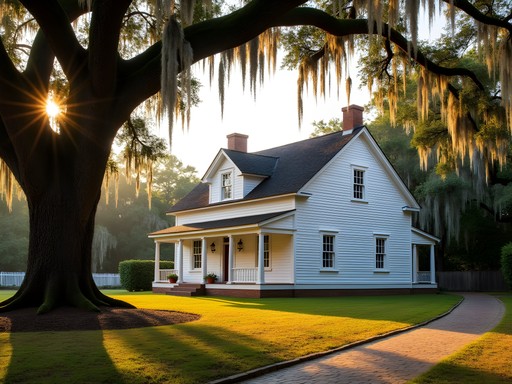

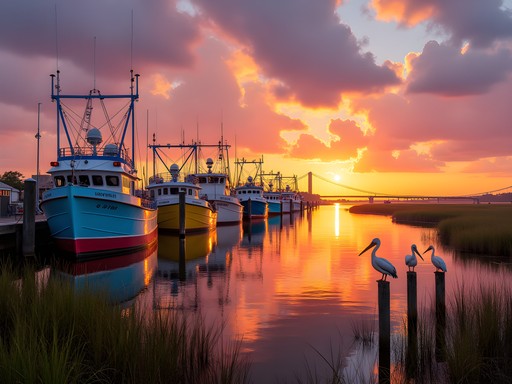



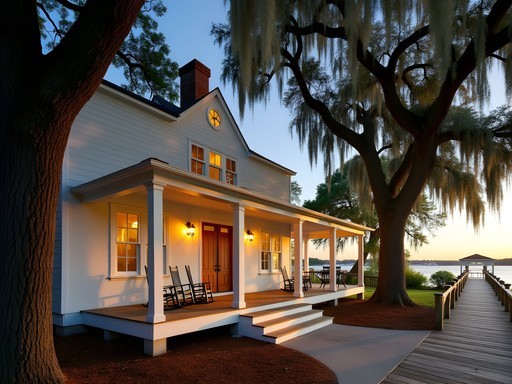






Comments
starbackpacker
First time visitor to the Charleston area last week and we decided to stay in Mount Pleasant instead of downtown - best decision ever! So much quieter but still easy to get to everything. We did Boone Hall and Patriots Point in one day which was ambitious but doable. The slave cabins at Boone Hall were incredibly powerful and educational. One tip: if you're into photography, the Avenue of Oaks looks completely different depending on the time of day. We went early morning and got some amazing shots with the light filtering through the trees. Also had an incredible seafood dinner at one of the restaurants on Shem Creek - perfect sunset views!
travelace
Which restaurant did you go to on Shem Creek? We're looking for good dinner spots!
starbackpacker
We went to Tavern & Table and got a table outside right by the water. The shrimp and grits were amazing! I heard Water's Edge is great too.
wavewanderer
Visited Mount Pleasant last month and was really moved by the Gullah heritage preservation efforts. The basket weavers along Highway 17 are keeping such an important tradition alive. I spent about an hour chatting with one artisan who explained how the craft has been passed down through generations. Definitely worth stopping to appreciate their work!
Fatima Sims
I had a similar experience! The lady I spoke with had been weaving for over 40 years and learned from her grandmother. Did you get to try the sweet tea they often offer visitors?
wavewanderer
Yes! That sweet tea was perfect on a hot day. Such gracious hospitality.
redblogger
OMG I LOVE MOUNT PLEASANT!!! We did a family reunion there last summer and it was PERFECT! Boone Hall was amazing but my absolute favorite thing was buying sweetgrass baskets directly from the weavers along Highway 17. My grandmother got to talk techniques with one of the artisans for almost an hour! Such an incredible cultural experience that feels so authentic compared to the tourist shops downtown. Great post!!
Sophia Gomez
Lucas, your post brought back wonderful memories! I was in Mount Pleasant for a conference last year and extended my stay specifically to explore these historic sites. The Charles Pinckney site was such an unexpected gem - quiet and so much less crowded than other attractions. The ranger gave an incredible talk about Pinckney's role in drafting the Constitution. I also recommend visitors take the time to chat with the sweetgrass basket weavers along Highway 17. I spent an hour talking with a woman whose family has been weaving for seven generations, and came home with a small basket that's now one of my most treasured souvenirs. I documented my visit in my travel journal which has become my constant companion on business trips when I sneak in some cultural exploration.
Lucas Andrews
Thank you Sophia! The Charles Pinckney site really is underappreciated. And yes, the conversations with basket weavers are often the most meaningful part of the experience - each basket contains generations of history and technique.
coffeeace903
Those sweetgrass baskets are amazing but so expensive! Worth it though - true artwork.
travelace
Planning a trip with my 7 and 9 year olds in October. Is Patriots Point appropriate for kids that age? And how much time should we set aside for Boone Hall?
smartpro
My kids are 8 and 11 and they LOVED Patriots Point! The aircraft carrier has lots of planes to see and interactive displays. For Boone Hall, I'd recommend at least 3 hours to do it justice.
travelace
That's super helpful, thank you! Definitely adding both to our itinerary.
hikingqueen
Heading to Charleston area next month. Is it worth staying in Mount Pleasant instead of downtown Charleston? And how much time should we allow for Patriots Point? My husband is a huge naval history buff.
Sage Dixon
Not Lucas, but I'd recommend splitting your stay! Mount Pleasant is more relaxed and often cheaper, plus you get those amazing bridge views. For Patriots Point, give yourselves at least 3-4 hours if your husband loves naval history. The USS Yorktown alone can take 2+ hours if you explore all the exhibits. Don't miss the Medal of Honor Museum inside the carrier. I'd suggest bringing a portable fan if visiting in warmer months - those metal ships get HOT inside!
hikingqueen
Thanks so much for the detailed advice! Will definitely look into splitting our stay and plan a full morning for Patriots Point.
smartpro
Just got back from Mount Pleasant last month and this post is spot on! The Avenue of Oaks at Boone Hall took my breath away. We spent half a day there and it wasn't nearly enough. The Gullah presentation was incredibly moving - really makes you think about the plantation's full history beyond just the pretty trees. Patriots Point was also amazing but bring comfortable shoes, that aircraft carrier is MASSIVE. My kids loved climbing around the USS Yorktown but we were all exhausted afterward.
Lucas Andrews
Thanks for sharing your experience! You're right about comfortable shoes at Patriots Point - I should have mentioned that in the post. The Gullah presentation at Boone Hall is indeed powerful and essential to understanding the full history.
coffeeace903
Did you do the ghost tour at Boone Hall? Worth it?
smartpro
We skipped the ghost tour because of the kids, but heard good things from other visitors!
Megan Martin
Excellent coverage of Mount Pleasant's historical significance, Lucas. I visited the Charles Pinckney site during research for an article last year and was surprised how few tourists it gets compared to other Charleston-area attractions. The ranger-led tour provides fascinating context about early American politics. I'd also recommend visitors check out the Old Village district if they have time - the historic homes along Pitt Street and the old Pitt Street Bridge site offer a peaceful walking route with harbor views that most tourists miss.
hikingqueen
Thanks for the Old Village tip! Planning a trip for October and looking for less crowded spots.
moontime
Those Spanish moss photos are gorgeous! Definitely adding Mount Pleasant to my Charleston trip.
Venture X
Premium card with 2X miles, $300 travel credit, Priority Pass